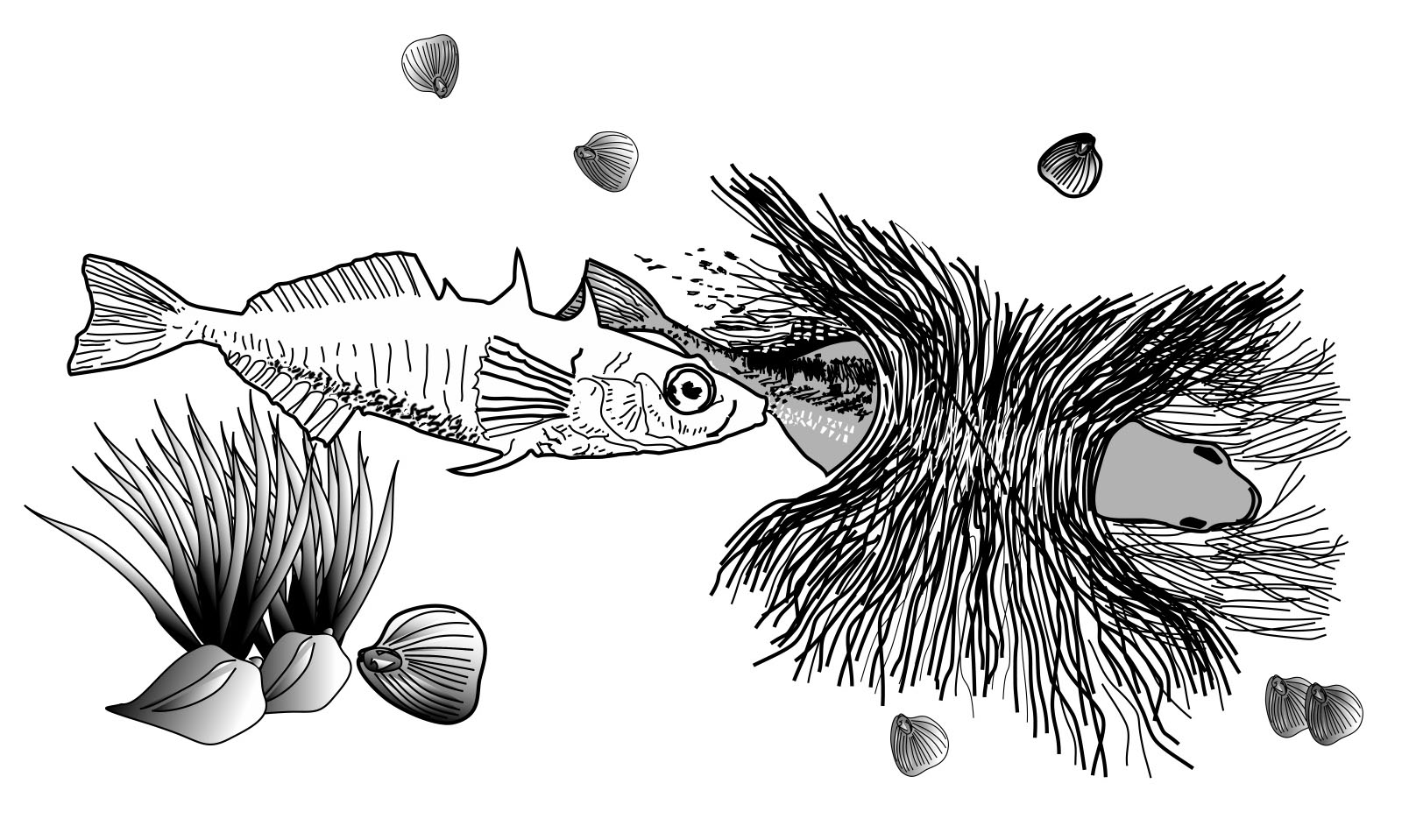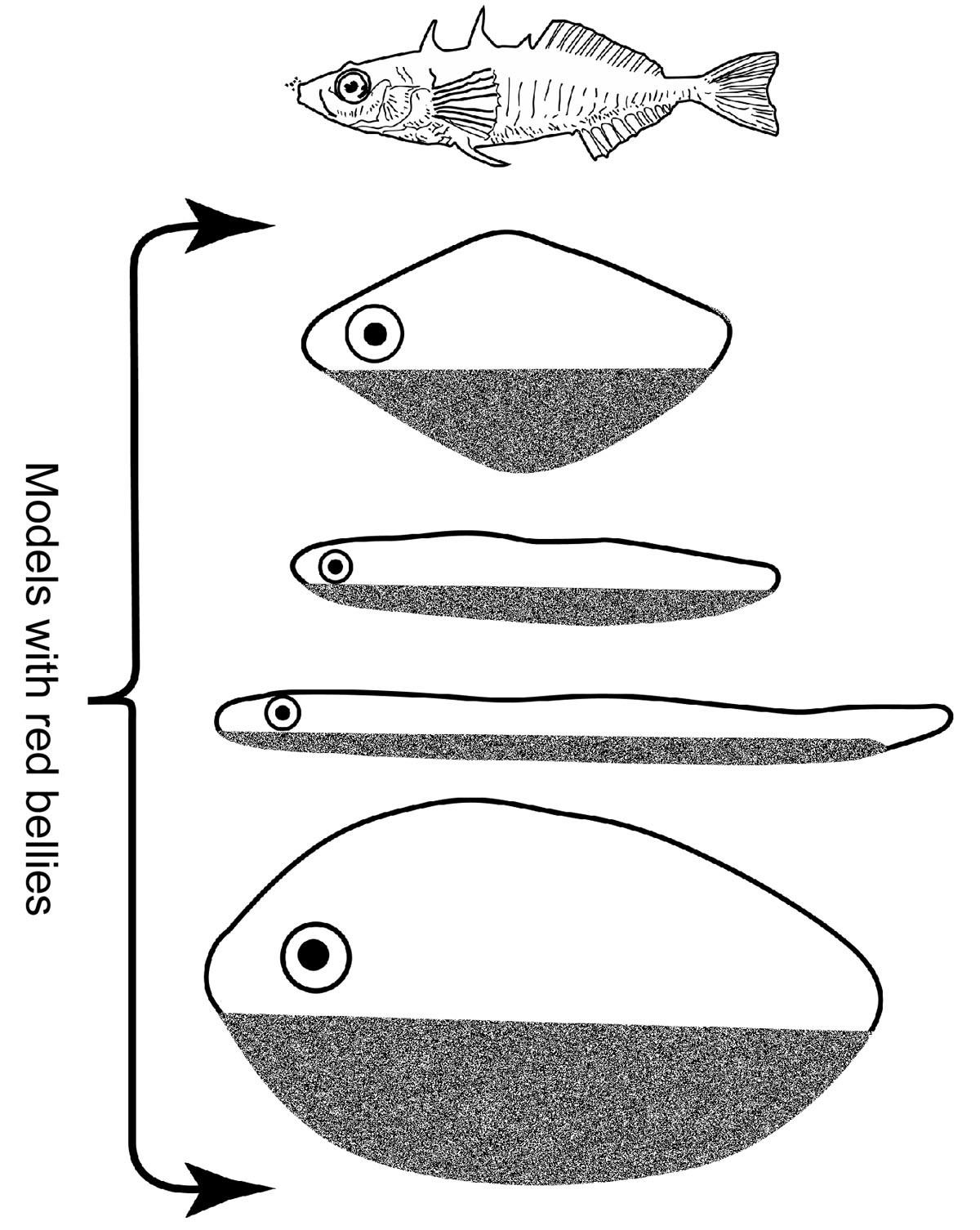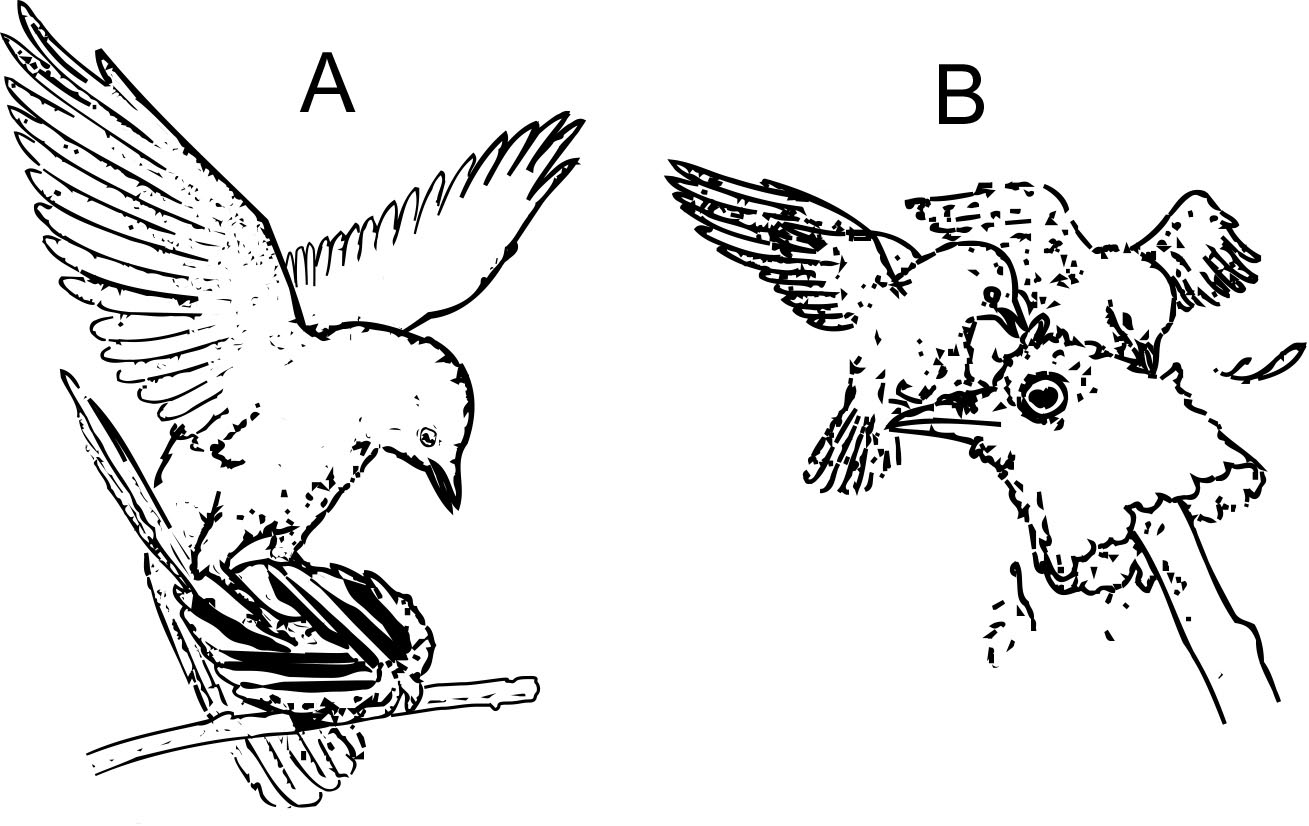Copyright © 2007-2018 Russ Dewey
Classic Ethology
Comparative psychology developed mostly in the United States. A European science of animal behavior developed independently, and it came from zoology, not psychology. It was called ethology (pronounced ee-THOL-ology). By the end of the 20th Century, it had merged with comparative psychology.
At the middle of the 20th Century, comparative psychology and ethology were as different as could be.
| Comparative Psychologists | Ethologists |
| American | European |
| Emphasized learning | Emphasized instinct |
| Worked in labs | Worked in labs and in the field |
| Used few species | Observed many species |
| Cool scientific attitude | Loved their animals |
| White lab coats | Flannels or wool sweaters |
The two approaches to animal psychology were so different that some scientists on both sides felt threatened by the other side. Heated exchanges crossed the Atlantic in the early 1960s.
What were differences between ethologists and U.S. comparative psychologists at mid-century?
The Americans accused the ethologists of reverting to unscientific instinct theories of the early 1900s. The Europeans accused the Americans of ignoring species differences.
In this case, the clash of opposing perspectives had a fruitful outcome. After several decades of intellectual combat, both camps learned from each other.
Behaviorists learned to recognize examples of learning prepared by evolution. Ethologists adopted more systematic observation procedures.
As early as 1972 experts declared the two approaches "linked if not fused" (Crook and Goss-Custard, 1972). By 1980, a survey (Demarest, 1980) showed that 50% of American comparative psychologists regarded "ethology" as a synonym for "comparative psychology."
However, as the 1993 survery reported a few pages ago showed, Americans were slow to adopt the ethologists' preference for studying various different species in the field. Comparative psychologists continued to study mostly rats and pigeons.
There was a big change in attitude and assumptions, however. Comparative psychologists no longer regarded ethologists as opponents.
The few American comparative psychologists who existed (they were never much more than 2% of psychologists) no longer believed that all animals learned the same things in the same ways. They now recognized biological and evolutionary influences on learning.
Tinbergen and Lorenz
Two names widely identified with ethology from the 1930s through the 1960s were Niko Tinbergen, from the Netherlands, and Konrad Lorenz, an Austrian who worked in Germany. Tinbergen and Lorenz collaborated in the 1930s and thereafter.
Ethology blossomed after World War II. Both Lorenz and Tinbergen developed active programs of research, attracting talented graduate students and co-workers. Across the Atlantic, Americans heard about them through articles in the magazine Scientific American.
Who were the two founding fathers of modern ethology? What were some ways they influenced the field?
Tinbergen and Lorenz invented much of the vocabulary still used today in the field of animal behavior. They wrote books, published articles, and gave many young scholars a start in the field.
For example, Eranus Eibl-Eibesfeldt, the leading proponent of Human Ethology, was a student of Lorenz. Tinbergen, who moved to England and taught at Oxford after WW II, had students like Richard Dawkins and Desmond Morris.
Both Tinbergen and Lorenz received Nobel Prizes. They died within months of each other, Tinbergen in 1988, Lorenz in 1989.
Tinbergen's Observations of Sticklebacks
In 1951 Niko Tinbergen wrote The Study of Instinct, a book filled with entertaining examples of animal behavior. A year later Tinbergen published an influential article in Scientific American, "The Curious Behavior of the Stickleback" (Tinbergen, 1952).
For many American psychologists, this was their first exposure to the concepts of ethology. Tinbergen explained how he came to devote years of study to a little fish.
When I was a young lecturer in zoology at the University of Leyden 20 years ago [the early 1930s] I was asked to organize a laboratory course in animal behavior for undergraduates.
In my quest for animals that could be used for such a purpose, I remembered the sticklebacks I had been accustomed as a boy to catch in the ditches near my home and to raise in a backyard aquarium.
It seemed that they might be ideal laboratory animals. They could be hauled in numbers out of almost every ditch; they were tame and hardy and small enough to thrive in a tank no larger than a hatbox. (Tinbergen, 1952)
Why were the sticklebacks handy lab animals?
Tinbergen performed high-quality research simply by observing the Sticklebacks' behavior in great detail and experimenting to see what changed their behavior. For example, Tinbergen observed the sticklebacks perform an elaborate mating ritual, carried out the same way each time.
First the male stakes out a little area of sand on the bottom of the ditch (or pond, or aquarium). This becomes his territory, defended against all other males. The male stickleback then digs a little hole, shoveling sand with his snout until the hole is about two inches deep and two inches wide.
He gathers stringy pieces of algae, coats them with a sticky substance secreted from his kidneys, and piles the algae in the pit, forming a little mound. Finally, the male stickleback wiggles through the mount, leaving a tunnel.
Now the stickleback changes color. He becomes bluish white on the back and bright red on the underside.
What is the stickleback mating ritual?
"In this colorful, conspicuous dress the male at once begins to court females." The females, in the meantime, have become fat with hundreds of eggs.
When the male sights a female, he darts toward her then veers toward the nest. She follows in a distinctive head-
The female then slides into the nest, her head sticking out one end, her tail out the other. The male prods near the base of her tail with his snout, and this causes her to lay eggs in the nest.
When she swims out, the male swims into the nest and fertilizes the eggs. He repeats this ritual with several females.

The male stickleback prods the base of the female's tail to induce her to lay eggs
As his mating urge wears off, the male's colors gradually fade. He takes up a sentry position near the nest, fanning the eggs with his fins in order to keep them supplied with oxygen.
As the eggs mature, they need more oxygen and the male spends more time fanning them. Finally the babies hatch and the male rounds up strays by catching them in his mouth and carrying them back to the area of the nest. When the babies are large enough, they wander off.
How were Tinbergen's observations of the Stickleback typical of early ethology?
This article by Tinbergen typified the ethological approach of the mid-20th Century. He worked with a species he knew and loved.
He centered his observations on instinctive behavior linked to the reproductive cycle. He was at home in the laboratory and also out in natural settings. Tinbergen used sticklebacks in laboratory research, while his experiments with gulls were conducted in the wild.
Observations in the Wild
Ethological study starts with an ethogram. An ethogram is a simple descriptive list of behaviors, compiled by an observer in the natural environment.
Such observations must be carried out in the natural environment. Many animal behaviors make sense only when observed in a natural context.
After observing animals in the natural environment, ethologists might develop hypotheses to be tested with simple experiments. These could be done outdoors or in a laboratory environment.
What is an ethogram? What are blinds?
While compiling an ethogram, ethologists sometimes built shelters that disguised the observer while allowing observation and picture taking. These are called blinds or hides.
An ethologist, like a wildlife photographer, could spend many hours in a blind every day, for weeks, simply observing and recording behaviors. The result was a detailed record of natural behaviors.
A blind is not necessary if animals become habituated to human observers. Habituation occurs when humans put themselves in the presence of animals but never do anything alarming.
Eventually animals cease to respond to humans who are constantly visible. The idea of habituation is not to make animals tame; it is to become irrelevant so animals will behave naturally. Television programs like Meercat Manor used habituation to get their inside look at animal socities.
Jane Goodall was the first chimpanzee observer to use habituation as a technique. She followed a chimp family in the Gombe Reserve, in Tanzania.
Most of Goodall's first few months were spent observing the chimps with binoculars, if she could see them at all. She observed from a hilltop where she was in full view of the chimps. Eventually the chimps habituated to her presence and allowed Goodall to approach them for closer observation.
What is habituation and how is it accomplished?
Goodall was thrilled when some of the chimps initiated gentle grooming behavior with her, a sign of friendship among primates. She experimented with feeding bananas to the chimps, a practice that resulted in some interesting observations but also some wild feeding frenzies.
Worse, the chimps started invading her camp, looking for food. Having totally lost their fear of humans, they became destructive.
Goodall eventually realized she made a mistake when she allowed interaction with the chimpanzees. She instituted new rules of non-contact between humans and chimps that are in effect to this day at the Gombe Reserve facility.
What are technologies that help researchers make observations in the wild?
Advances in camera technology and GPS technology revolutionized the study of animals in the wild toward the end of the 20th Century. Creature cams (small cameras with wireless transmitters) could be attached to anything from a mouse to a whale, giving researchers a video record of a creature's travel.
Fiber optics allow filming inside tiny burrows, tunnels, and nests. Global positioning systems permit precise tracking of individual animals.
Urban wildlife such racoons, kangaroos, deer, and moose were studied using GPS transmitters. They were found to infiltrate human cities at night, maintaining large and complicated territories.
For species that are especially shy of human beings, infra-red triggered cameras proved to be ideal for sightings. Trail cams produce recordings of animals acting without the defensiveness created by nearby humans, often revealing relaxed forms of socialization (bears rubbing their backs on trees, racoons riding the backs of wild boars, and other internet favorites).
Action Patterns (Motor Programs)
Action patterns or motor programs are behaviors sometimes called instinctive or innate. They are shaped by the animal's genetic heritage, wired in to the nervous system. In many cases these behaviors can be elicited by direct brain stimulation.

Yawning is species-typical but not limited to one species
A motor program or action pattern is a distinctive, stereotyped pattern of movement carried out by most healthy members of a species. Such behaviors are species-typical but not unique to one species.
Many motor programs are shared by a wide variety of species. Consider yawning. Humans yawn, hamsters yawn, rabbits yawn, horses yawn.
Yawning is an excellent example of a motor program. It is stereotyped and built-in. It is species-typical (typical of individual species) but definitely not unique to one species.
Is a species-typical pattern necessarily found only in one species?
The phrases instinctive behavior, innate behavior, action patterns, motor programs and wired-in behaviors have all been used to label species-typical behaviors. Motor program is the most widely used term now, usually (except in the United States) spelled the British way: motor programme.
Because motor programs are genetically based and built into the nervous system, they may persist even when the reason for their existence is gone. Declawed cats continue to make claw-
What is an isolation experiment and what does it indicate about a behavior?
How does a scientist determine whether a behavior is learned from other members of the species or hard-wired into the nervous system? The classic technique is to do an isolation experiment.
In this type of experiment, a young animal is raised from babyhood in isolation from other members of its species. If species-typical behaviors nevertheless appear, they must be programmed into the nervous system.
Sometimes an isolation experiment occurs accidentally, when an baby animal is found orphaned. It might then be raised from infancy in a human household. Species-typical behaviors appear anyway. A student writes:
How do isolation experiments sometimes happen accidentally?
When we talked about animal behavior in class, it reminded me of my roommate's pet squirrel. Cindy has had the squirrel since it was a little baby. He fell out of his nest even before his eyes were open.
The squirrel, named Scooter, still shows normal squirrel behaviors even though he has been raised by humans. Cindy made him a little tent by putting two pillows together.
Scooter will hide all sorts of toys and food in his house and goes through all the motions of digging a hole to hide his horde in. He loves to run through tunnels and holes and loves to jump from chair to chair.
High places are his favorite, e.g. curtain rods and ceiling beams. He rotates his food in his paws before he eats it. Even though he retains these habits, he seems happy in captivity and always runs back to the house after being put outside. [Author's files]
The basic form of a species-typical behavior is built into the animal's nervous system, but motor programs are sometimes modified by experience. Bird song is a fruitful area of study for those interested in critical periods, short periods of time when a baby animal is influenced by exerience, such as hearing an adult sing.
All mammals learn. By contrast, reptiles emerge from eggs with all their motor programs ready to go. They require no practice.
Releasers
Species-typical behaviors are often triggered by specific stimuli in the environment. The stimulus that triggers an action pattern is called a sign stimulus or releaser.
A releaser is a specific input to the nervous system that triggers a motor program. For example, Tinbergen found that male sticklebacks would attack anything red during mating season, when their own bellies were red.
Usually this resulted in attacking other males competing for nesting territory. However, the fish would attack anything red, not just other sticklebacks.
In one experiment, Tinbergen fashioned a series of stickleback models, ranging from a very realistic but colorless model to a very unrealistic blob with a red belly. The male stickleback ignored the realistic fish without the red belly but attacked all the models with the red bellies.

The stickleback in mating season ignores a fish model which lacks a red belly but attacks a shapeless blob with a red belly.
Evidently the color red released the attack response. For similar reasons, male cardinals sometimes attack their mirror images in side-mirrors of automobiles.
Sign stimuli can be very specific. That is why fishing lures with distinctive markings can be effective. They may release a biting response even if they do not resemble a living animal.
What is a sign stimulus or releaser? Which stickleback model was most effective in eliciting an attack, and why?
The critical feature of a sign stimulus becomes evident when a motor program is set off by the wrong thing. One day Tinbergen's lab students noticed all the sticklebacks attacking the sides of their aquariums near a window.
Across the street was a red postal van. The small patch of red visible through a window was enough to set off attack responses in the Sticklebacks.
Why did Tinbergen's sticklebacks suddenly dart to the side of the aquarium?
Why would the stickleback respond so vigorously to any red object? Apparently it is a more successful strategy, in evolution, to attack all red objects, wasting a little energy on red leaves, rather than failing to attack a male who might be fertilizing your brood of eggs. False positives are not costly, but false negatives might be, so the system is biased toward false positives.
Why does the stickleback attack anything red?
Highly complex motor routines, including mating responses and defensive reactions, can be set off by specific stimuli. Consider the following figure, adapted from Alcock (1975, p.65). It contains two examples of complicated movements that normally help birds pass on their genes.

Complex behaviors triggered by simple stimuli
(A) "A male red-winged blackbird copulating with a mount consisting of the tail feather of a female raised in pre-copulatory position." Even though the tail feather is on a seed pod, not a female bird, it sets off the sexual response in the male.
(B) "Willow warblers attacking the stuffed head of a cuckoo." The head is on a stick, clearly (to humans) not part of a living bird, but the small warblers attack it.
What do Alcock's examples have in common?
In the natural setting, each behavior would seem purposeful or intelligent. The examples show these motor responses are triggered by specific stimuli in more or less robotic fashion.
---------------------
References:
Alcock, J. (1975) Animal Behaviour: An Evolutionary Approach. Sunderland, MA: Sinauer Assoc. Inc.
Crook, J. H. & Goss-Custard, J.D. (1972). Social ethology. Annual Reviews, 23, 277-311.
Demarest, J. (1980) The current status of comparative psychology in the APA. American Psychologist, 35, 980-990.
Tinbergen, N. (1951). The Study of Instinct. Oxford: Clarendon Press.
Tinbergen, N. (1952, December) The Curious Behavior of the Stickleback. Scientific American, 187, pp. 22-26.
Write to Dr. Dewey at psywww@gmail.com.
Don't see what you need? Psych Web has over 1,000 pages, so it may be elsewhere on the site. Do a site-specific Google search using the box below.
